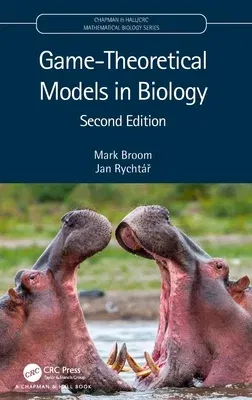Covering the major topics of evolutionary game theory,
Game-Theoretical Models in Biology, Second Edition presents both
abstract and practical mathematical models of real biological
situations. It discusses the static aspects of game theory in a
mathematically rigorous way that is appealing to mathematicians. In
addition, the authors explore many applications of game theory to
biology, making the text useful to biologists as well.
The book describes a wide range of topics in evolutionary games,
including matrix games, replicator dynamics, the hawk-dove game, and the
prisoner's dilemma. It covers the evolutionarily stable strategy, a key
concept in biological games, and offers in-depth details of the
mathematical models. Most chapters illustrate how to use Python to solve
various games.
Important biological phenomena, such as the sex ratio of so many species
being close to a half, the evolution of cooperative behaviour, and the
existence of adornments (for example, the peacock's tail), have been
explained using ideas underpinned by game theoretical modelling.
Suitable for readers studying and working at the interface of
mathematics and the life sciences, this book shows how evolutionary game
theory is used in the modelling of these diverse biological phenomena.
In this thoroughly revised new edition,
the authors have added three new chapters on the evolution of structured
populations, biological signalling games, and a topical new chapter on
evolutionary models of cancer. There are also new sections on games with
time constraints that convert simple games to potentially complex
nonlinear ones; new models on extortion strategies for the Iterated
Prisoner's Dilemma and on social dilemmas; and on evolutionary models of
vaccination, a timely section given the current Covid pandemic.
Features
- Presents a wide range of biological applications of game theory.
- Suitable for researchers and professionals in mathematical biology and
the life sciences, and as a text for postgraduate courses in
mathematical biology.
- Provides numerous examples, exercises, and Python code.

